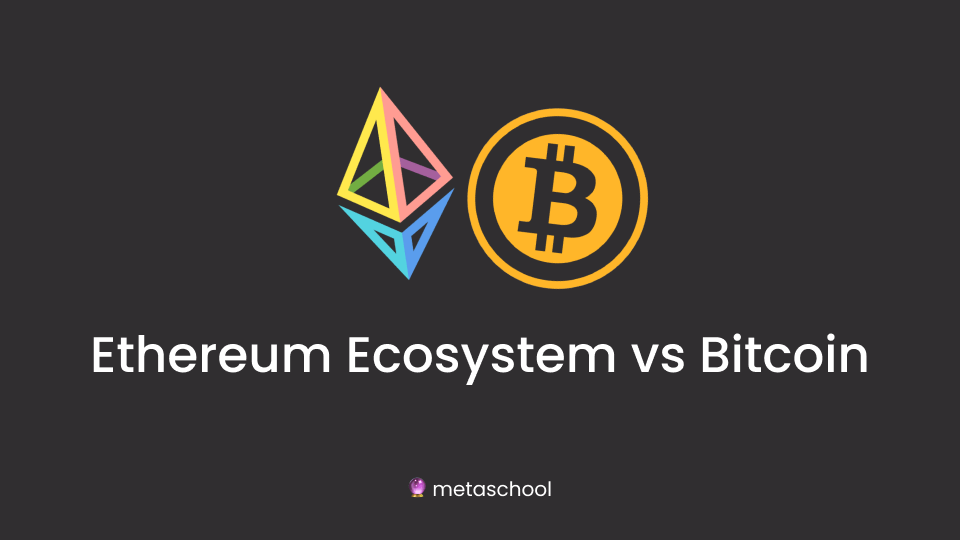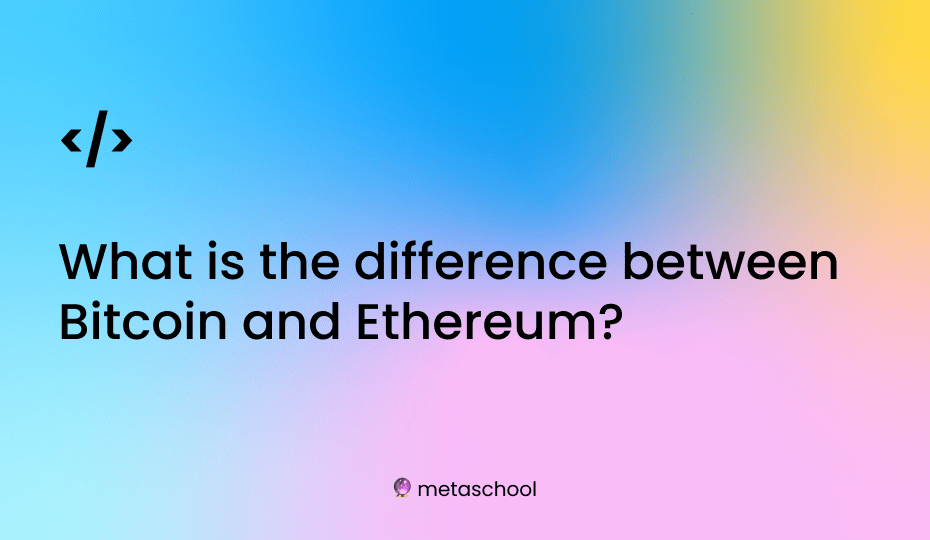Table of Contents
Bitcoin and Ethereum are both decentralized, open-source blockchain networks, but they have different design goals and use cases.
Overview of the Ethereum Ecosystem vs Bitcoin
Bitcoin
Bitcoin is primarily a digital currency founded by Satoshi Nakamoto, and its primary goal is to provide a decentralized alternative to traditional fiat currencies. Transactions on the Bitcoin network are recorded on a public ledger called the blockchain, and new bitcoins are created through a process called mining.
A real-life example of the use of Bitcoin is the purchase of goods and services online, such as buying a product from an e-commerce store, or booking a hotel room.

Ethereum
On the other hand, Ethereum is a blockchain platform founded by Vitalik Buterin that enables the creation of decentralized applications (dApps) and smart contracts. Smart contracts are self-executing contracts with the terms of the agreement written directly into code.
A real-life example of the use of Ethereum is the use of decentralized finance (DeFi) applications, which are financial applications built on the Ethereum blockchain. These applications allow for peer-to-peer lending, borrowing, and trading of assets without the need for a centralized intermediary.
Another example of the use of Ethereum is the creation of Non-Fungible Tokens (NFTs), which are unique digital assets that are stored on the Ethereum blockchain, and can be bought and sold in a similar way as traditional assets.
Key technical differences between Bitcoin and Ethereum
While Ethereum and Bitcoin are both blockchain-based platforms, they are fundamentally different. Here’s how.
1. Consensus mechanism
Bitcoin uses a consensus mechanism called Proof of Work (PoW), which requires miners to solve complex mathematical problems to validate transactions and add them to the blockchain.
Ethereum previously used PoW, but has now transitioned to a consensus mechanism called Proof of Stake (PoS), which allows users to validate transactions based on the amount of cryptocurrency they hold.
2. Blockchain model
Bitcoin’s blockchain is primarily used for the transfer of its native currency, Bitcoin.
Ethereum, on the other hand, is a more general-purpose blockchain that allows for the creation and execution of smart contracts and decentralized applications (dApps).
3. Programming languages
Bitcoin’s script is the programming language used to create scripts and smart contract on the Bitcoin blockchain.
Ethereum, on the other hand, uses a programming language called Solidity.
4. Storage structure
Bitcoin’s blockchain is a linear chain of blocks, with each block containing a batch of validated transactions.
Ethereum’s blockchain is more complex, with a tree-like structure called a “patricia trie” that can store a more diverse set of data types.
Found this helpful? Check out the related blogs below or enroll in a web3 course. 👇🏼
